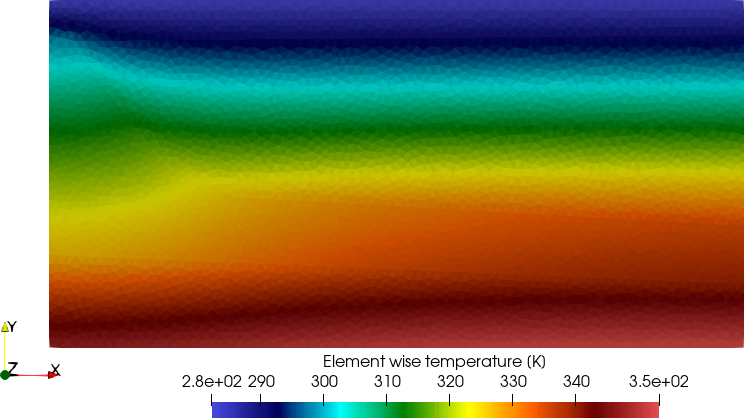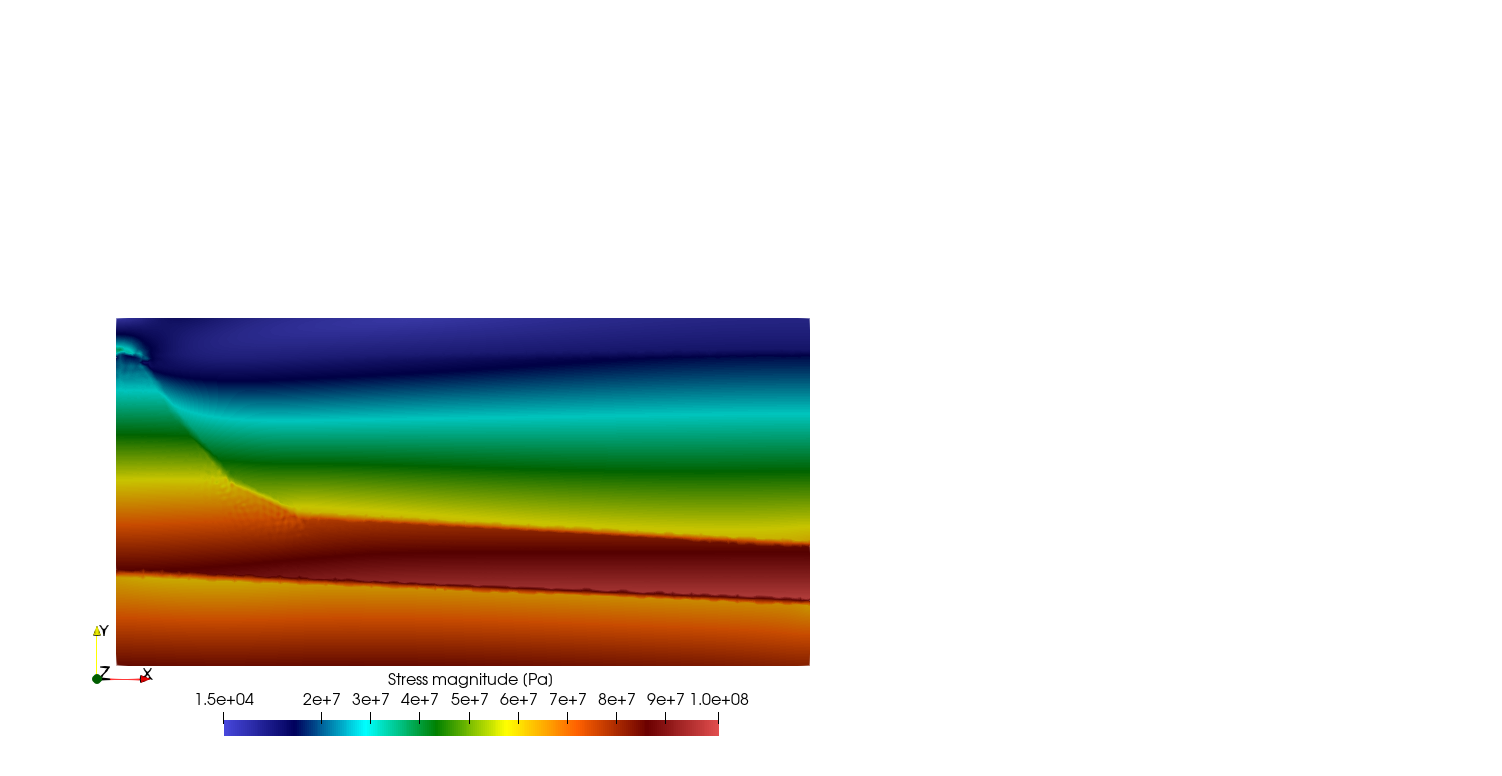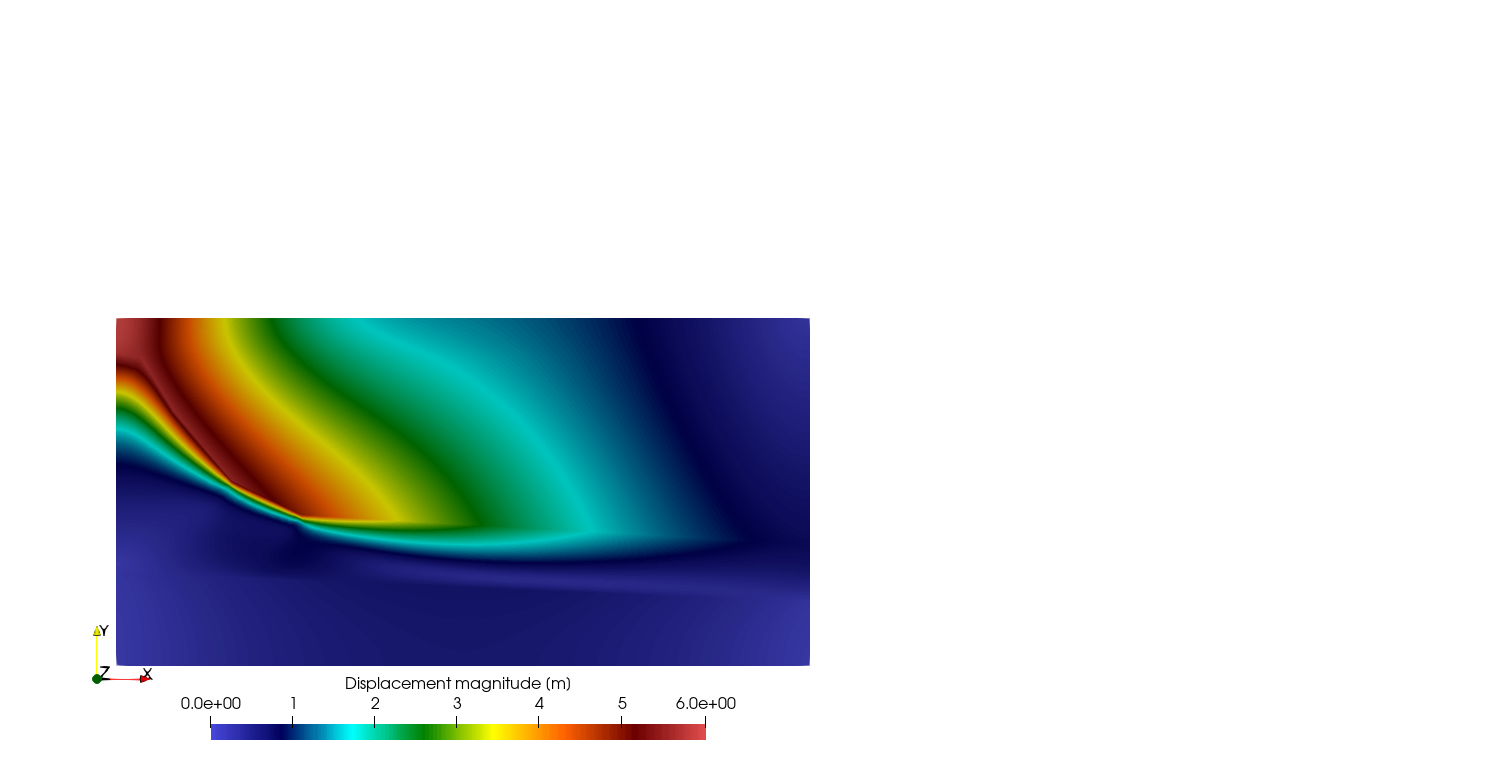Creep analysis with a heterogeneous reference temperature
This plane strain creep problem is based on the conceptional model of salt dome presented in Bruns [1] and one of the benchmarks of the AREHS project (https://www.overleaf.com/project/5e908e022978e30001bc6b44). It is used here to test the use of the element wise distributed reference temperature.
The 2D domain is a rectangle with a size of 6000 m $\times$ 3000 m. The displacement in the normal direction of the lateral and the bottom boundaries are fixed. The top boundary is traction free. The BGRa creep model with the parameters of $A=0.18\, \mbox{d}^{-1}$, $m=5$, $Q=54 \mbox{ kJ/mol}$ is used for the creep analysis. The other material parameters are listed in the following table:
| Over burden | Cap rock | Salt rock | Basement | |
|---|---|---|---|---|
| Youngs’ modulus [GPa] | 7.7 | 15.6 | 25.0 | 15.6 |
| Poisson ratio | 0.28 | 0.3 | 0.25 | 0.3 |
| Density [kg/m$^3$] | 1925.0 | 2700.0 | 2140.0 | 2700 |
The reference temperature is shown in the following figure:

As a benchmark, only one thousand years’ creep with six time steps is considered.
The following two figures shown the results of stress magnitude and displacement magnitude at the last time step:


References
[1] Bruns, J. and Boetticher, L. and Doose, H. and Cottrell, M. and Wolff, P. and G{\"u}nther, R.M. and Naumann, D. and Popp, T. and Salzer, K. (2012): Glazigene Beeinflussung von Wirtsgesteinstypen Ton und Salz und deren Einflüsse auf die Eignung zur Aufnahme eines HAW-Endlagers. Abschlussbericht, vol. 292,
This article was written by Wenqing Wang. If you are missing something or you find an error please let us know.
Generated with Hugo 0.147.9
in CI job 577984
|
Last revision: May 22, 2025
Commit: Remove deprecated TES process 6477209a
| Edit this page on